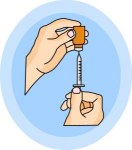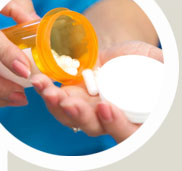 Over the years, I’ve written a number of postings about how pharmaceuticals are distributed in the United States, based on my interest after handling a counterfeit drug case from 2002. That case, involving 16-year-old liver transplant patient Timothy Fagan from Long Island who was injected with counterfeit Epogen, resulted in significant changes in the way pharmaceuticals are bought and sold in this country by multibillion dollar businesses, and supposed safeguards on who can buy and sell.
Over the years, I’ve written a number of postings about how pharmaceuticals are distributed in the United States, based on my interest after handling a counterfeit drug case from 2002. That case, involving 16-year-old liver transplant patient Timothy Fagan from Long Island who was injected with counterfeit Epogen, resulted in significant changes in the way pharmaceuticals are bought and sold in this country by multibillion dollar businesses, and supposed safeguards on who can buy and sell.
(You can read more on it at the counterfeit drugs resource page at my web site, which I haven’t updated in awhile but gives background, or by clicking the counterfeit drugs tag here.)
Now, an article in Fortune once again explores the dark side of the pharmaceutical drug trade, not from the standpoint of counterfeits, but from the standpoint of how stolen drugs can land in your pharmacy and be bought by you, completely unaware of the path they have taken:
This is the teaser and the lede:
Organized gangs are stealing prescription medicine in increasingly audacious heists. That’s a problem for Big Pharma and for patients, who can unknowingly buy stolen — and sometimes dangerous — medications.
By Katherine Eban, contributor
FORTUNE — A few years ago a security expert visited Eli Lilly’s vast warehouse in Enfield, Conn., one of the pharmaceutical giant’s three U.S. distribution sites, where hundreds of millions of dollars’ worth of prescription drugs are stored. The expert was surprised to see the facility lacked a perimeter fence. There wasn’t even a $10-an-hour guard stationed outside. But Lilly officials assured the consultant there was nothing to be concerned about. Recalls the expert: “They were very proud to show me. ‘We have four-foot-thick walls.'”
He then looked up at the ceiling. “I was like, ‘What’s up there?'” he says. “There” turned out to be a standard tar roof with no extra reinforcement or fortification….
The rest of the story is here: Drug Thefts Go Big

